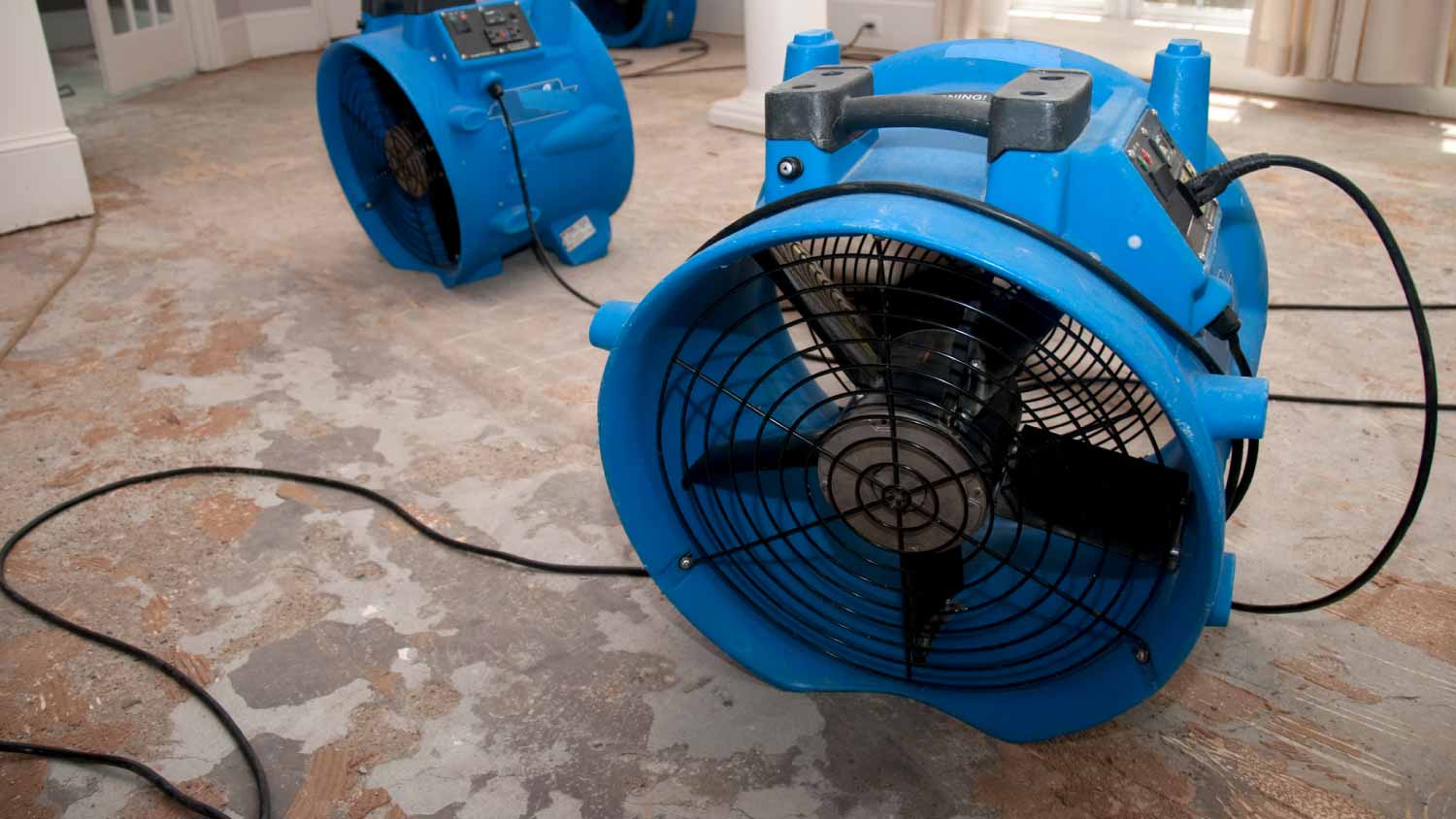
Fire damage restoration costs vary widely based on the extent of the damage. Learn how to assess your home and estimate your total after a fire.
Wood plus water doesn't have to equal your worst nightmare


Dry rot may just look unsightly when it first sets in, but if you don’t treat it quickly, it can destroy wood components and even spread to other materials in your home. Knowing how to repair dry rot and how to identify it in the first place can help you protect your property from worsening conditions.

Before you can stop wood rot, you have to know what you're looking for. So, what does dry rot look like? Some common signs of it include:
Peeling paint or blistering
Discolored or darker wood
White or gray mold spores
Orange or brown mushrooms growing on the wood
Dry rot is just one type of wood rot, and you should confirm that you’re not dealing with another type before you implement a solution. Contact a local water damage restoration specialist to help confirm the underlying issue if you’re not sure.
First, find the cause of the rot and fix it before you repair the damaged area. The fungus that causes dry rot will only set into damp wood, so address any leaks or related problems before treatment to prevent wood rot from spreading. Common causes of dry rot include:
A roof leak
Lack of ventilation
Clogged gutters
Shrubbery or greenery that grows too close to your home
Protective paint peeling off of exterior trim
Water pooling on window sills
Inspect exterior areas of your home looking for any signs of excess moisture, leaks, or water damage. If you’re unsure how to treat the problem, call a professional to help ensure you get a permanent solution.
Use a chisel and wire brush to remove any areas of infected wood. Dry rot causes wood to get crumbly, creating cubical cracks in the material, so chisel off large portions of infected wood and brush off the rest.
Remember to wear protective gear, including a mask, goggles, and gloves while working. Keep chiseling and brushing until you've removed all the damaged material and are left with what appears to be unharmed wood.
You may not be able to remove all the damaged wood from the area. In that case, strengthen the wood by applying epoxy wood hardener to it. Use a foam brush to apply the wood hardener, allowing it to seep into the wood’s cracks and holes. Let the wood hardener dry for two to four hours.
Wood hardener contains a high level of volatile organic compounds (VOCs) that are dangerous to inhale and should never contact your skin or eyes. Wear protective gear when applying, including a respirator, safety goggles, long sleeves, and rubber gloves, and always ensure good ventilation in the area.
Use a putty knife to smooth wood filler onto the rotted area to create an even surface. The wood filler should harden within an hour. Once it's hard to the touch, use sandpaper to smooth it down.
Patching with wood putty is only possible if you just have topical damage. If a large portion of the wood is damaged, you’ll need to cut it out and replace it, or splice in new wood. If that’s the case, it’s best to hire a local handyman service, as these repairs require some carpentry experience and specialized tools.
Treating minor dry rot is a relatively straightforward project that most homeowners can tackle themselves, but there are a few key mistakes to avoid.
Failing to treat the underlying moisture issue. Dry rot is caused by a fungus, and although it can continue to spread through dry wood, it only takes root in moist wood. Failing to treat the moisture problem that caused the dry rot in the first place will lead to repeat problems.
Waiting too long before treating the problem. Dry rot spreads relatively quickly, and it can move from moist wood to dry wood and even other building materials if left untreated. Make sure you carry out a complete solution the second you start seeing signs of wood rot.
Not calling in a pro if the damage is extensive. Repairing minor surface damage on rotted wood is DIYable, but anything more extensive requires help from a professional who fixes wood rot. A pro can treat the root cause of the dry rot, replace damaged materials, and help ensure you don’t see ongoing problems.
DIYing repairs on structural components. Feel free to DIY minor dry rot repair on exterior trim, but always call a professional if you see dry rot on structural components, including floor joists, beams, wall framing, and roof rafters. Without help from a pro, even minor dry rot here could lead to structural damage in your home.
Though the terms are used interchangeably, wood rot and dry rot have different meanings. Wood rot is a broad term that describes various types of fungal decay in wood, while dry rot is a specific type of wood rot caused by the fungus Serpula lacrymans. Dry rot can thrive at a low moisture level and spread rapidly across plaster and even masonry to infect new areas of wood.
Minor dry rot repair on decorative pieces of wood is DIYable, but anything more severe requires help from a professional. If you notice extensive sections of dry rot spanning more than a few inches, you should call a water damage restoration company. In that scenario, replacing the damaged wood instead of repairing it is the best option.
You should also always hire a water damage restoration pro if you notice dry rot inside your home, especially on structural components. A water damage pro can restore your home and give you tips and advice for making sure the dry rot doesn't come back, and they can make sure the source of the moisture is taken care of. Dry rot repair costs will be highest if your issue is with structural components, but the cost of water damage restoration is well worth the investment.
From average costs to expert advice, get all the answers you need to get your job done.

Fire damage restoration costs vary widely based on the extent of the damage. Learn how to assess your home and estimate your total after a fire.

Water damage restoration costs depend on the severity of the problem, the type of water, and the length of time the damage has been occurring.

Fire hydrant costs might not be an expense you think about day-to-day, but they’re important to consider for the safety of your home.

What does water damage look like in a home? Use this guide to spot water damage after a leak or flood to determine if you need to take action.

When you buy a home, you’ll likely need hazard insurance to protect it from things like natural disasters and burglaries. Learn how insurance costs can vary.

If your home is suffering from water damage, it’s crucial to dry out the space. Learn how long to run fans after water damage to avoid mold growth.